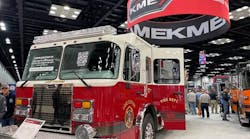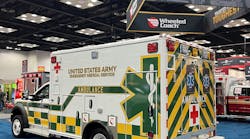This column is a component of VFIS' "Operation Safe Arrival" initiative, aimed at heightening safety awareness and reducing the frequency and severity of accidents involving emergency vehicles.
Most volunteer emergency service agencies rely heavily on their members' ability to respond to emergency calls, either to the scene or the station, in their personal vehicles. Yours may be one. While this practice is essential if your organization is to react quickly to emergencies, there are inherent risks associated with it.
The most significant risk - which all too often results in accidents - is that members tend to operate their personal vehicles as if they are emergency vehicles. While motor vehicle laws vary from state to state, all address the use of personal vehicles by volunteers. Their common theme: Although licensed emergency vehicles may be permitted prudently to exceed the posted speed limit, move against traffic flow, and proceed through a negative intersection control device, personal vehicles are not emergency vehicles and therefore are not permitted the same, if any, exemptions from state motor vehicle laws. (*see note below)
There may also be a reference in these laws regarding the use of blue or red "courtesy lights." Basically, these lights are a request for other drivers to be courteous enough to let you pass them. They are not a grant of, nor legitimate demand for, right of way. Neither do they permit you to illegally pass or speed up to overtake another vehicle.
What should your organization do to reduce the risks associated with personal vehicles? Your volunteers must understand that, first and foremost, they have to arrive at the emergency scene or the station safely in order to be of any help to the public. We strongly suggest you develop and enforce standard operating procedures (SOPs) that include, but are not limited to, the following:
- Volunteers responding in personal vehicles should obey their state motor vehicle code with respect to courtesy light and siren privileges.
- Courtesy lights should not be used by volunteers as a license to operate their personal vehicle as if it were an emergency vehicle. All courtesy lights should be approved by the chief and a written permit be issued. The permit should include the "rules of the road" applying to the expected usage.
- Volunteers responding in personal vehicles should never exceed the posted speed limit.
- Volunteers responding in personal vehicles should always stop at every stop sign and red traffic signal and wait for normal right of way before proceeding.
- Procedures for at-the-scene parking/staging should be included in the SOPs.
- Every volunteer must have personal auto liability insurance with appropriate liability limits that protect not only the volunteer but also your organization. This should be verified in each instance.
Once developed, these standard operating procedures should be included in all new member orientations and driver training sessions. All members should receive a written copy and sign off that they have received and understand the policy. In addition, you should develop written enforcement and progressive discipline guidelines for any member who violates the policy.
*In some states, a firefighter's privately owned vehicle can be considered an emergency vehicle with the chief's approval. Nevertheless, the driver must still adhere to all applicable motor vehicle laws.
Related: Don't Become A Statistic Developing Procedures For Emergency Vehicle Response Safe Intersection Practices Responding In Personal Vehicles VFIS Operation Safe Arrival Website




